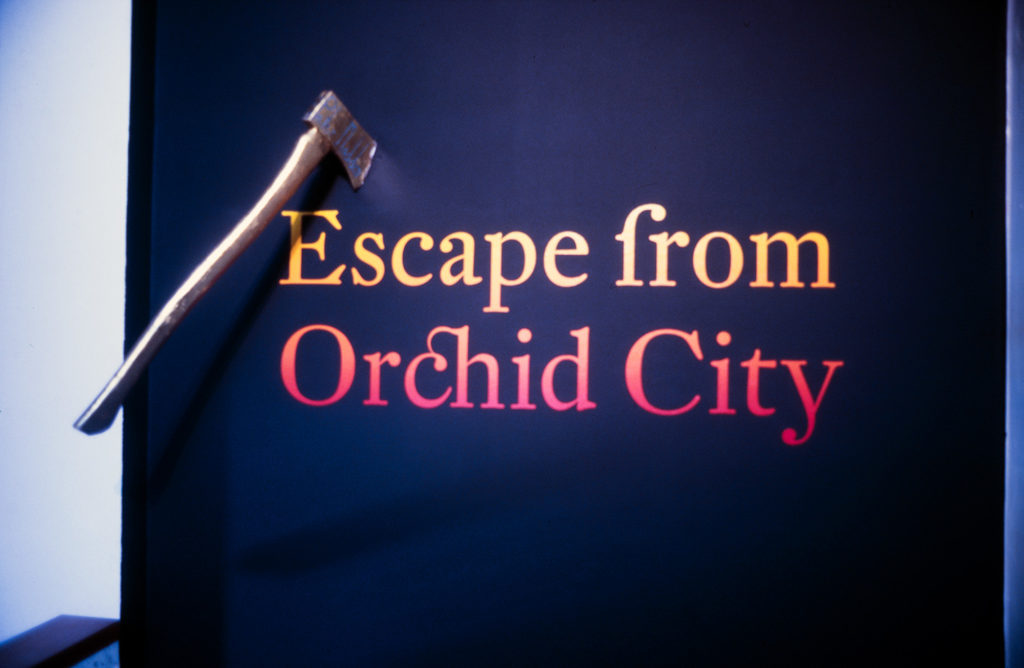CURATOR Sarah Farrar PUBLICATION essays Peter Madden, Sarah Farrar
Peter Madden's first public-gallery solo exhibition is titled after a central work. In Escape from Orchid City, the frame of a school chair, extended by spindly black platforms and stilts, sprouts a plethora of collaged orchids, birds, snakes, skulls, and spiders. Labyrinthine in its intricate detail, it's textbook Madden. He describes it as 'an architectural tabulation through the centre of a chair with a clouding of cut-out orchids'.
Born in 1966, Madden has a BVA from Auckland Institute of Technology (1992–5) and a MFA from Elam School of Fine Arts (2002–4). He's a prolific collage and photomontage artist, renowned for creating 3-D universes from images cut from books and magazines. He says, ‘In my work, I’m cutting into a body of knowledge, poetically releasing the images.’
Old National Geographic magazines are a favourite source. National Geographic has been described as offering an ‘imperialist nostalgia ... mourning the passing of what we ourselves have destroyed’. While Madden exploits the magazine's lush imagery, he also draws attention to its 'colonial gaze', the white western tendency to exoticise 'the other'.
Madden's work addresses how we seek to order and classify the world around us, the poetics of the museum, and the frailty of nature. His collage, Ur-World (2006), offers a constellation of the earth's fish, fowl, and flora (it's reproduced on the exhibition poster). The show also includes stuffed birds, mostly native huia, which were wiped out in the early twentieth century. A major contribution to the species' demise, Madden notes, was museums' desire to possess specimens. A vitrine of stuffed huia borrowed from Te Manawa in Palmerston North.
Madden's work nods to the vanitas genre of Dutch still-life painting, which had its heyday in the sixteenth and seventeenth centuries. Vanitas paintings presented symbols of the passing of time, transformation, and imminent death: skulls, snuffed candles, hourglasses, full blooms and rotting fruit, flies and butterflies. Madden's riotous, dense works also conjure up interdependence, transformation, and death. In the Dominion Post, Mark Amery writes: 'The butterfly and moth are prolific in Madden's work, reminders that life is brilliant, glossy, but fleeting, and, through a profusion of skulls, the spectre of death is ever present ... This is the equivalent of contemporary vanitas painting, the artist reminding us of our vanity and that the clock is ticking.'
The show also includes Ram Mount (2004), a ram's head blooming with paper flowers; Leave (2006), a pair of old fashioned men's leather shoes lined with paper moths wings; and fifty-eight dead houseflies, painted with national flags.
The public programme includes a lecture by Auckland artist and critic, Tessa Laird. A longtime champion of Madden's, she dubbed him, 'Robin Hood with a scalpel knife'. She adapts her article on him, 'The Living Dead'—first published by the online art magazine Natural Selection—into a creative PowerPoint. Rather than explaining Madden's works, her low-tech, high-impact sensory assault offers more layers of intrigue.









































































